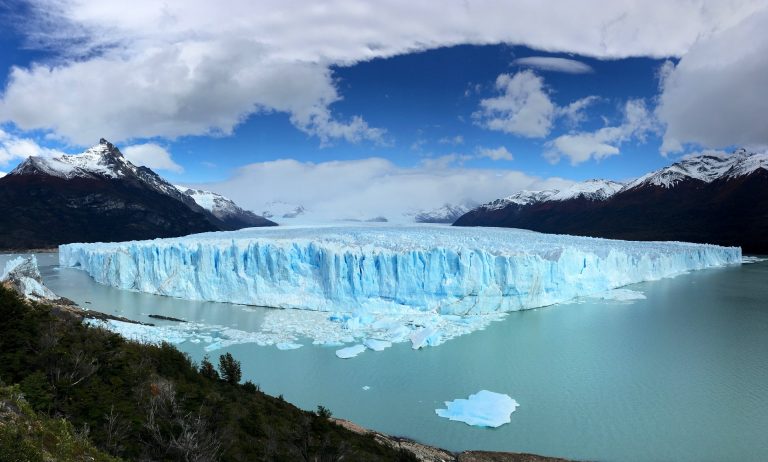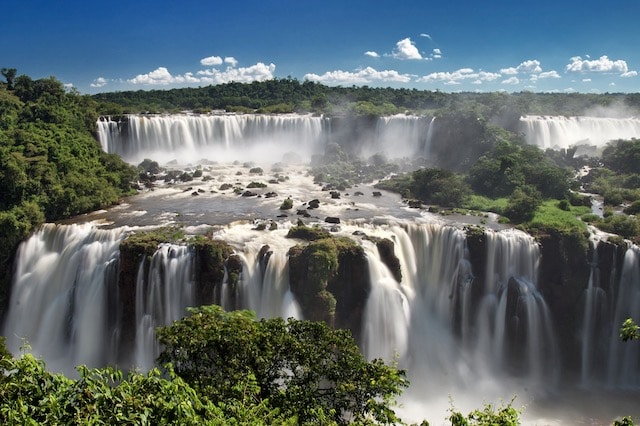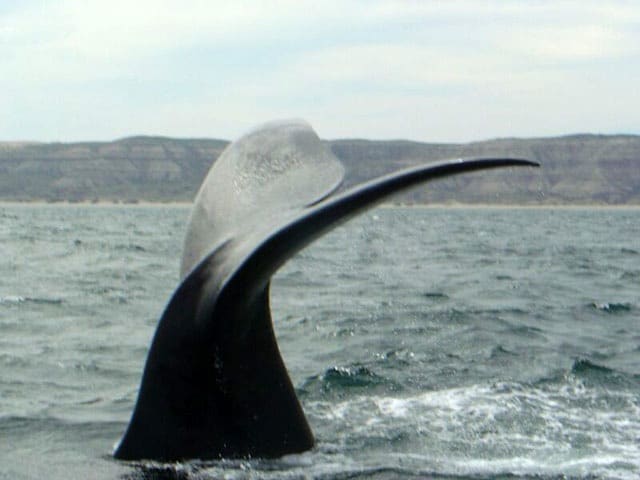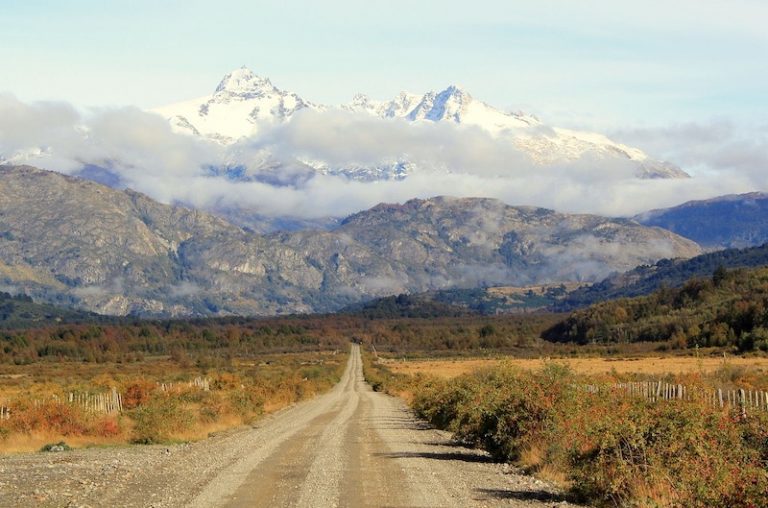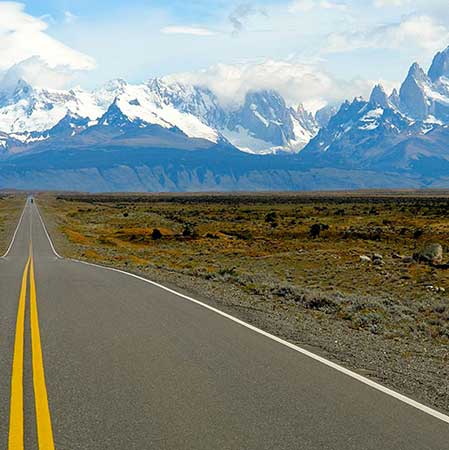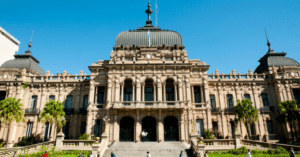What to do in Tucuman: A jewel of northern Argentina
Hello, adventurers! If you have decided to explore the north of Argentina,Tucuman is without a doubt one of those destinations that cannot be missing in your itinerary! Many call it the “Garden of the Republic”, and no wonder. Want to know why? Keep reading!
An immersion in history
Do you know what the magic of Tucuman is? It’s like walking through the pages of a history book. Every corner tells them about the past, about Argentina’s independence, heroes and legends. The Museo Casa Histórica de la Independencia is an excellent starting point. The country’s independence was declared right there! Imagine standing in the same place where the fate of a nation was decided centuries ago. Do you already feel part of history?
The colors of nature
Now, if we talk about landscapes, Tucuman is like a palette of colors. Greens, blues, golds… all in one place! For example, Las Ruinas de Quilmes will not only show you the rich pre-Hispanic culture, but also breathtaking panoramas. And you know what the best part is? It’s as if nature and history were joining hands. Have you ever felt that connection between past and present?
Flavors that conquer the palate
Have you ever heard that the best way to get to know a place is through its food? And Túcuman is no exception! The empanadas tucumanas are, without a doubt, the star of the place. But not only that, tamales, locro, and humita are like a warm embrace on a plate. And for those with a sweet tooth, have you ever tried fudge or candied nuts? A delight!
Music and dance that touches the soul
The night in Tucuman has its own magic. This is when folk music rises and intertwines with the stars. The peñas, those places where musicians and dancers gather, are the essence of the Tucumán spirit. Come and dance a zamba or a chacarero! And if you think two left feet are a problem, I promise the music will guide you.
San Miguel de Tucumán, one of the most urban and modern cities in Argentina, has been called the “Garden of the Republic” for its role in the country’s struggle for independence. The city is home to the building where independence from Spain was first declared, and its streets are full of history.
Apart from the vestiges of those days and some impressive churches, tourist destinations within Argentina’s fifth largest city are relatively scarce. Full of boutiques, street art and a distinctly more cosmopolitan feel than other cities in the north of the country, most people venture to the outskirts of Tucumán for their activities. Hike through the surrounding yungas forests, visit archaeological ruins and stroll through villages full of indigenous culture. Afterwards, return to the city to discover its museums, parks, cafes and local gastronomy.
Let’s explore the best things to do in San Miguel de Tucumán:
Independence Square

Enjoy many important historical sites at once from your seat on a bench in the city’s main square, Plaza Independencia.
Built during the colonial era, you can sit among native flowers and orange trees, and perhaps hear the occasional protest from residents trying to get the attention of their representatives.
The plaza was originally built to house government buildings and the city’s cathedral, so the Government House and the Cathedral of Our Lady of the Incarnation are also located here.
In the center you will see the Statue of Liberty, the work of artist Lola Mora, and the Padilla House, a National Historic Monument.
The square has modernized with the times and is now also full of bars, restaurants and museums.
2. Tucumán House

The Congress of Tucumán declared Argentina’s independence from the Spanish Crown in this same house in 1816. Painted bright white, this colonial house was used by the revolutionary government to hold meetings; they even knocked down an interior wall to provide more space for their sessions.
Now, visitors can tour this once-private house to learn more about the role of the city of Tucumán in the battle for Argentine independence and see the room (preserved in its original state) where the declaration was made.
The tours are very helpful and informative, especially if you don’t speak Spanish, and there is even a light show every night at this historic site.
3. Taste the local gastronomy

Home to some of Argentina’s best empanadas, check out Tucumán’s empanada stores and restaurants scattered throughout the city and neighboring towns.
Tucuman empanadas are usually fried and have beef, chicken or tripe fillings.
There is even an official “Tucumán Empanada Route”, with a map of 27 places to try empanadas in the city alone (plus others in the nearby towns of Yerba Buena and Famaillá). Every February, Famaillá celebrates the National Empanada Festival, during which thousands of people visit the city to consume more than 400,000 of these delicious delicacies.
But in addition to these small packages of delicacies, try other regional dishes such as locro, chivo and tamales.
The city is also famous for its sugar cane production, so you will find many local sweets here.
4. Tour through the Yungas

Outside the city, the landscape becomes lush and green, so take at least an afternoon to explore it on your own or with a tour company.
The Yungas are a region of tropical and subtropical rainforest with tons of biodiversity that you can tour through the Circuito Chico.
This popular tourist route includes the picturesque town of Yerba Buena, the ravines and grandiose mansions of Villa Nougues, and the hills and statue of San Javier.
It can also include excursions to the forests of Raco or to the monastery of El Siambón.
There are views for every day, photo stops and detours to hike to a waterfall or visit the Cadillal Dam.
5. 9 de Julio Park

In fact, there are so many things to do in the city’s largest park, Parque 9 de Julio, that you could spend an entire afternoon here.
In addition to the lake and its numerous jogging and walking trails, you will also find statues, a rose garden, a flower clock and university buildings.
In downtown, be sure to visit the Casa del Obispo Colombres, the beautiful old colonial home of a bishop that is now the Museo de la Industria Azucarera, a museum detailing Tucumán’s sugar cane industry.
The park itself is full of bars, restaurants and cafes, so you can have a picnic on the grass or just stop at one of the many establishments already here.
6. Sierra de San Javier Park
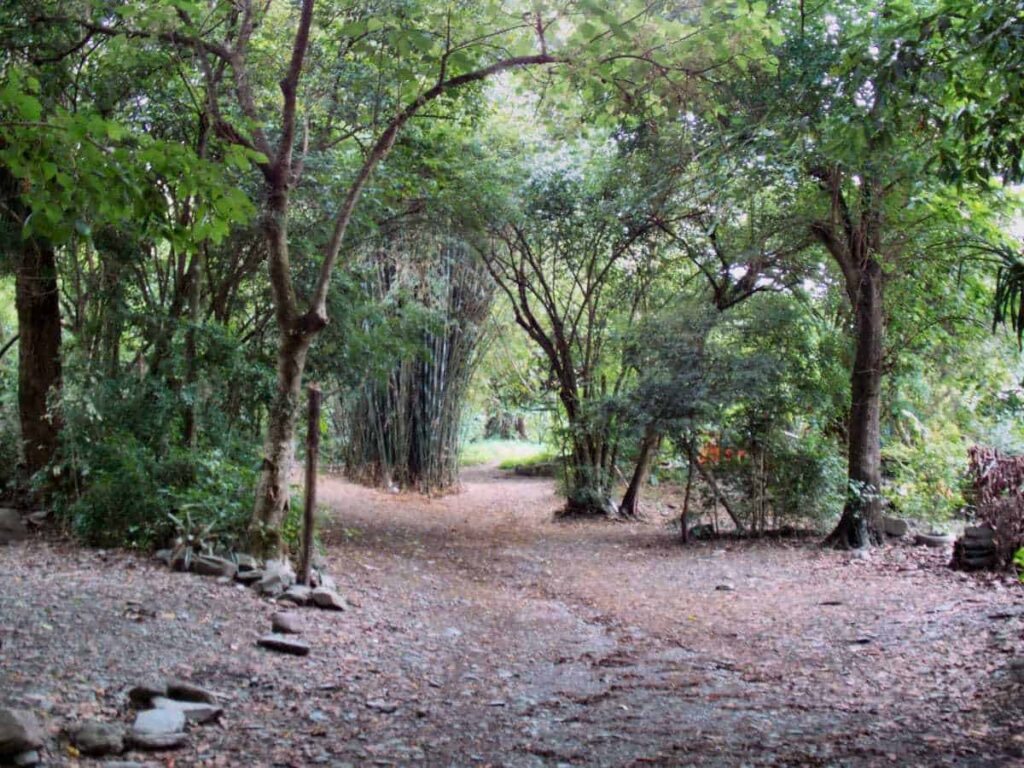
To appreciate the size of Tucumán and how green the surrounding valleys are, visit the Sierra de San Javier Park.
Known for its impressive statue of the Blessed Christ with his arm outstretched in blessing, this picturesque hill and landmark is located on the outskirts of Yerba Buena and can be reached by public bus (colectivo) or car.
It is a very popular tourist spot, so it is common to find souvenir vendors and kiosks with snacks in the area.
Bring a picnic and relax, or visit the small museum under the statue.
If the weather is nice, stay at sunset to watch the city light up. If you are interested in paragliding, many take-offs take place from this park, so contact companies in town.
7. El Cadillal Dam

For a break from the hustle and bustle of the city, drive 20 minutes to this quiet reservoir surrounded by woods.
The calm waters are created by the Celestino Gelsi dam, located just inside the Medina and Medici hills.
These shores, an oasis for tourists created in 1965, have pleasant restaurants and open-air bars, as well as campsites where you can spend the night next to the reservoir.
It is an ideal place to practice water sports such as windsurfing, kitesurfing and kayaking, as well as hiking, fishing and mountain biking around the water, which reaches 67 meters deep.
Tourists can visit the Roman-style amphitheater on the banks of the reservoir or visit the nearby Archaeological Museum.
For magnificent views, take the chairlifts of El Cadillal up into the hills.
8. Trip to Tafí del Valle

It is one of the most beautiful towns in the Calchaquí Valley, on the outskirts of Tucumán, and a must for those in search of nature, history and gastronomy.
Its name means “Town of the Splendid Entrance” and attracts tourists who want to see the well-preserved 18th century Jesuit architecture.
Visitors can also hike the mountain trails, horseback ride through the hills or stroll through the village’s quaint cobblestone streets to shop for handicrafts.
Tafí del Valle is also part of the country’s Cheese Route, and in the town you will find artisan cheese dairies and artisan cheese stores.
It is said that the Jesuits brought the recipes long ago, and the town even hosts the National Cheese Festival in February.
9. Visit the churches of the city
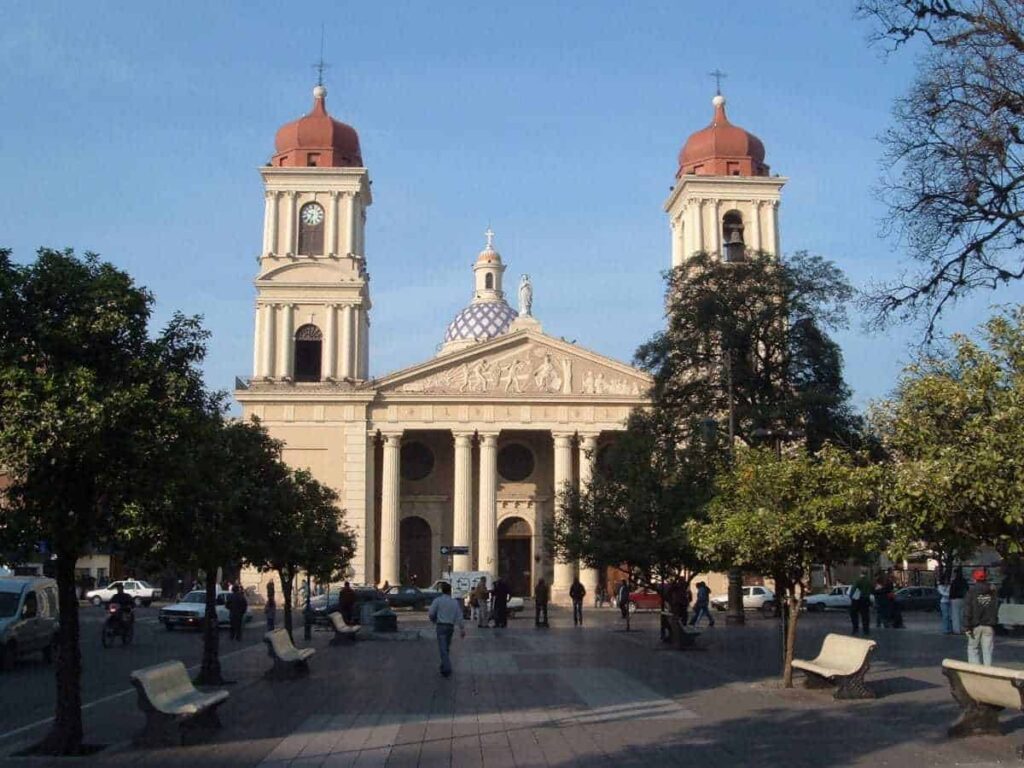
There are a few magnificent churches in the city if you like cathedrals, architecture and religious art.
From the main square, you will see the Cathedral of San Miguel de Tucumán with its two towers, red domes, sculptures, colonial baroque details and painted ceilings.
Two blocks away, the Basilica of Nuestra Señora de la Merced contains murals and stained glass windows that narrate the history of Argentina’s independence.
The hero of the war, General Manuel Belgrano, named the Virgen de la Merced patron saint of the Argentine army, and inside the church you can see for yourself.
The Parroquia de San Francisco is a colonial style church that has passed from the Jesuits to the Dominicans to the Franciscans over the years, and although it has been somewhat neglected in terms of maintenance, it is still a beautiful historical monument with important relics inside.
10. Visit the valleys and archaeological ruins.

The numerous ruins in the Calchaquí and Choromoros valleys surrounding Tucumán are perhaps the most impressive and substantial in Argentina.
Drive yourself or book an excursion to make archaeological, natural and historical stops in the towns surrounding the city.
The ruins of Quilmes are the remains of an indigenous settlement that began in 800 B.C. and reached a high level of sophistication, growing into a society of thousands of inhabitants and building a fortress of which parts can still be seen today.
You can also visit El Pichao, with its archaeological museum and a small community of self-sufficient families known for making artisanal jams from local ingredients.
El Mollar is a popular stop for its monoliths and stone walls dating back more than 2,500 years.
11. Visit Amaicha del Valle

You can add this pleasant village to your tour of the valleys and ruins, or you can take a day trip to experience it at your leisure.
The town attracts tourists who want to immerse themselves in the indigenous culture and history, as well as the multicolored valleys found here.
In addition to the ruins of Quilmes, Amaicha del Valle has festivals, handicrafts, works of art and native gastronomy.
Try the standing wine (aguardiente or mistela), alfajores and quesillos, and buy handmade textiles.
There is a large museum dedicated to Pachamama, or mother earth, where you can see many traditions of the Diaguita and Calchaquí cultures, as well as their artwork.
In February, the Pachamama Festival is celebrated, where you can enjoy singing, dancing, native folklore and music in the streets.
Near El Remate you can also hike, swim and visit the waterfall.
12. Simoca Fair
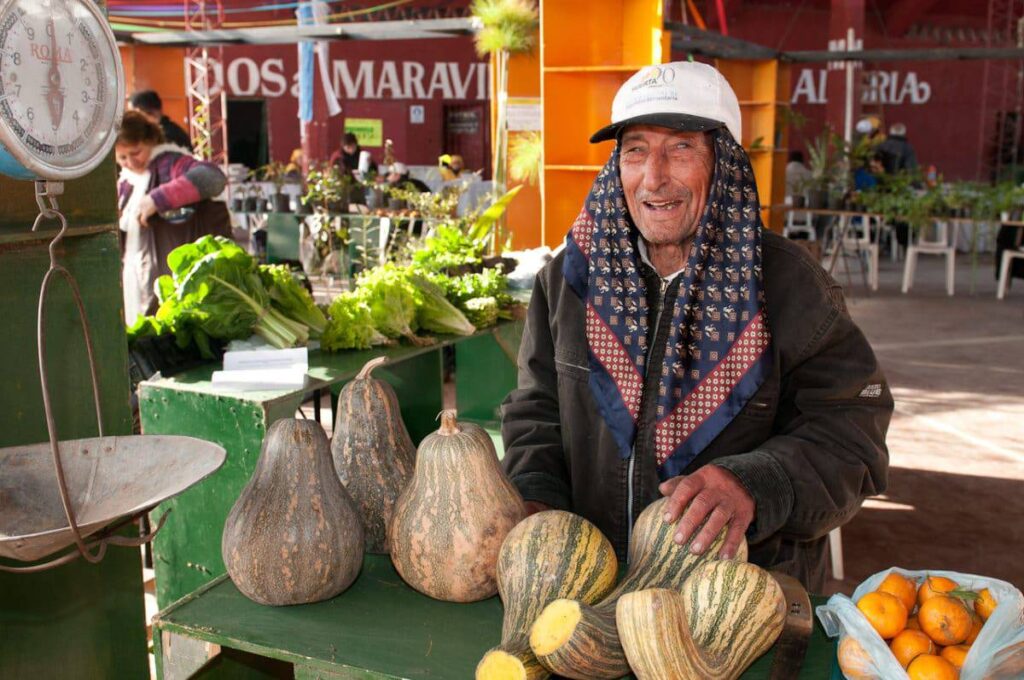
A true local market, don’t be squeamish about freshly slaughtered cattle.
It is a fabulous place to taste authentic dishes at inexpensive prices directly from the hands that made them.
Grab some typical snacks and stroll through the variety of fresh produce, farm animals and huge blocks of locally made cheeses on offer while people-watching.
There are plenty of plastic tables where you can buy a drink and sit down with your empanadas, tamales or platters of greasy grilled meats.
The market also offers handicrafts and dressed-up llamas for photo opportunities.
13. Visit Termas de Río Hondo
Take a dip in some of the most famous hot springs in Argentina, located 86 km from Tucumán.
It’s an all-day affair, but the complex surrounding the hot springs has plenty to keep you busy when you’re not soaking.
Try the restorative waters of these 14 mesothermal groundwaters that are believed to relax the body and help with lung, rheumatic and digestive problems.
Visit nearby restaurants to taste the local specialty: roasted kid raised in the province of Santiago del Estero.
There is also a shopping center, a renovated waterfront area and a casino next to the hot springs.
14. Campo de Los Alisos National Park

About two hours from Tucumán, this relatively new national park is a great destination if you like wildlife and being outdoors (and especially if you go by car). Hiking and climbing can be practiced, as well as a lot of bird species such as the Andean condor and the peregrine falcon.
More difficult to spot are ocelots, wolves, pumas and foxes within this transitional Yunga forest landscape.
There are free campsites and a hiker’s shelter inside the park, but other than that the infrastructure for tourists is quite limited.
If you are in the mood for a five to seven day excursion, you can hire the services of a guide to take you in search of La Ciudacita, the ruins of an ancient Inca enclosure found in the park.
15. The Noque River Waterfall

Bring a swimsuit and take this short, easy walk to a waterfall and clear pools where you can swim.
You can do this excursion even without your own car by taking the colectivo (public bus) that enters the Sierra San Javier Park and passes by the statue of Christ.
Follow the road downhill through the Yungas to enjoy the forest and reach the beautiful waterfall.
There are no cafeterias or kiosks to eat, so bring your own and relax for a while; some locals stay all day.
It’s a popular weekend spot, so if you’re looking for peace and quiet, go on a weekday.
Conclusion
In short, Tucuman is that jewel that many travelers are looking for: rich in history, full of spectacular landscapes, with a gastronomy that conquers and a culture that can be felt in every musical note. So, what are you waiting for? Tucuman is calling you! And when you are there, remember that it is not just about visiting a place, but about feeling it, living it and taking a little piece of it in your heart.
My organised trips to Patagonia
In the carousel below you can see already assembled itineraries for inspiration, click on the one you are interested in and ask me for a quote.
Compact trip through the southernmost Argentinean Patagonia: Ushuaia and El Calafate
Enjoy the 3 most relevant ecosystems in Argentina: The End of the World, The Glaciers and the Iguazu Falls.
Trip to Patagonia Argentina in 7 days touring the most beautiful landscapes of Patagonia Argentina (Peninsula Valdés & El Calafate)
The Carretera Austral by rental car is probably one of the most spectacular routes in Patagonia, designed to be travelled with plenty of time in your rental car.
Tour along Route 40 in Patagonia, starting on Route 3 on the Atlantic coast and continuing along Route 40 until reaching the Andes Mountains and El Calafate.
The Australis Cruises are Expedition Cruises that sail through the Strait of Magellan and the Beagle Channel, exploring one of the most beautiful and unspoiled regions of the world such as Patagonia and Tierra del Fuego.
The Antarctic Cruise aboard the MV USHUAIA offers you an incredible introduction to the 'White Continent' at a reasonable price.



